The Edge of the Earth
by Ken Allen

LaĠie -- a wayside in Hawaii for 6,000 Saints on
windward Oahu --
a remote corner of the island.
A humble nineteenth century Mormon Christian colony built as a Zion--a place of gathering--by native Hawaiian Latter-day Saints--on this tropical islandĠs desert plain. Thought of as an infertile wasteland,
over a century ago a prophetic vision transformed it into a light to the world.

LaĠie -- home of Brigham Young University Hawaii -- where children of the Pacific come to learn -- and then go forth to serve -- back in their island homes.

LaĠie -- home of the Polynesian Cultural Center. Those children of the islands discover their proud cultural heritage here and then share their joy with the world.

Here the once-banned hula is preserved and the hukilau was invented.

Here the ubiquitous shaka wave originated as a greeting--with Hamana Kalili, a friendly Mormon choir leader who lost three fingers to the sugar mill.
All this from a humble Mormon colony.


Then there is the land. Verdant volcanic pali gorges gouged as by a giant's slashing fingers thrust upward to grasp at angry clouds pushed from the sea by insistent tradewinds carrying corrosive volcanic ash as acid rain.


Once a desert, it is now a site of garden homes and fertile lowland fields fed by discovered artesian wells.
An alphabet of copious crops: banana, breadfruit, coconut, corn, dates, guava, mango, papaya, passion fruit, pineapple, pomegranate and sugar cane plus ponds of prawns populate the plain.

Bantams peck at ironwood windbreaks
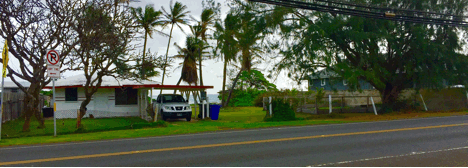
crowding a single thin ring road lined
with vacation bungalows and modest mansions.
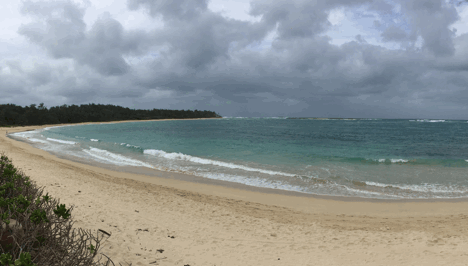
At Temple Beach, a fringe of golden sand arches around a palm framed cove.
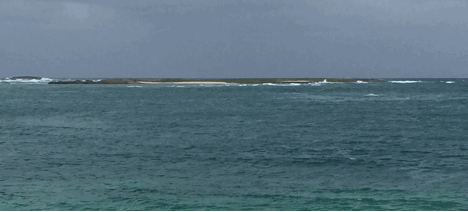
Tufts of greenery spring from Goat Island, a tiny black lava plate floating off the distant spit.

At the near point, a jetty of like-layered lava cuts forever across the beachhead where condos climb cliffs.
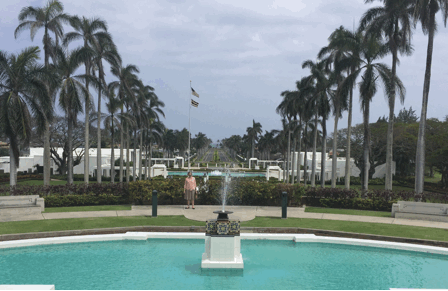
The two broad bands of Hale LaĠa Boulevard extend westward a mere mile from the open beach to a formal garden.
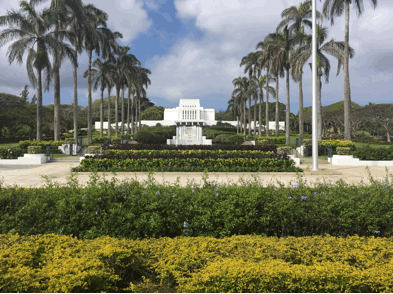
For more than a century, an alabaster sanctuary, Hale LaĠa, or the House of the Lord, the magnificent Mormon Temple, has crowned the hillside facing the sunrise at the framed horizon.
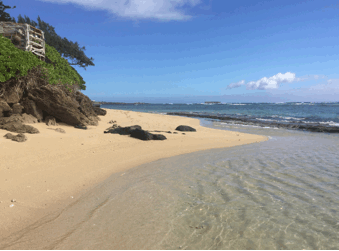
At the eastern gate,
the seashore, washed-up sand at the mouth of a freshwater stream forms a quiet
pond where white egrets wade, rare gray geese glide and sandpipers preen.
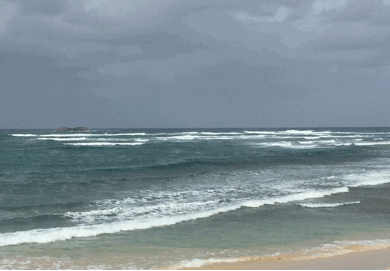
Roiling waves break into crashing surf at the reef ridge of the horizon driven by undulating winds.
Snorkelers swim close to colorful fish flitting among white coral, black lava and olive green kelp.
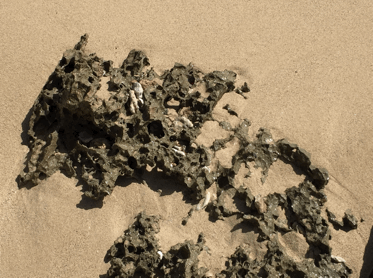
Sand crabs toss wet sand from foxholes between children's castles, then scamper from sight into the smooth wet sand.


Bronzed surfers launch board or body ahead of each wall of the largest waves before they break across the long shallow bottom, transforming azure clarity
into turgid tan
tossing coral and flotsam over the edge of the foam.
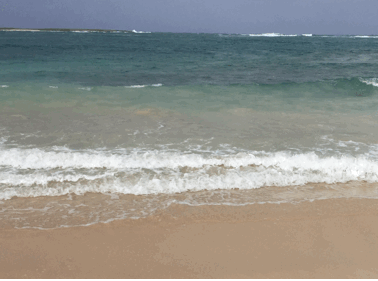
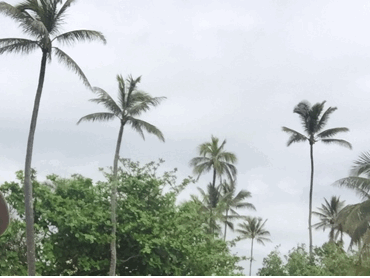
Misty showers kiss palms and sunbathers' bare backs for moments every few hours, bringing a cooling respite in the oppressive damp air and shade from the searing sun.

Intense reds, yellows, greens and purples of rugged blossoms compete with a rainbow.
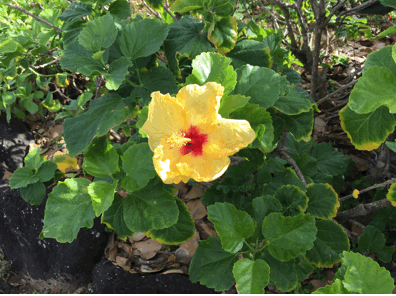
The undulating whoosh of soft surf and
rattling cadence of drops on fronds penetrate the sighing tradewinds.
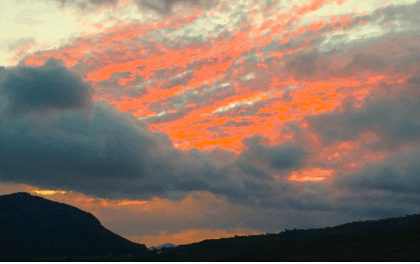
In the evening darkness, light from beach fires flicker against the canopy of clouds and coconut palms while floating phosphorescence above pulsates purple on the land below.
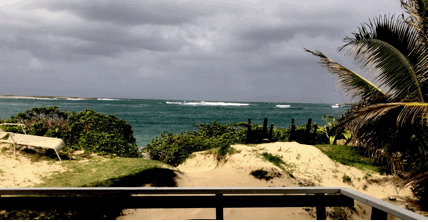
From a grassy green of a beachfront cottage at mere neck height above the tide,
both sunrise and
sunset kiss the same vast horizon.
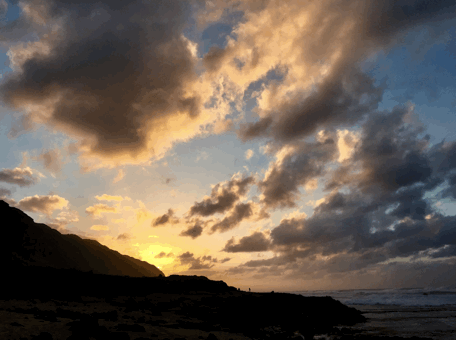
Here the edge of the earth touches heaven.